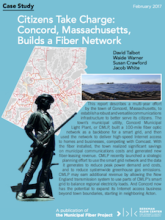Folks in Ammon, Idaho, are now getting choice, speed, and affordability from their new municipal Fiber-to-the-Home (FTTH) network. Home owners are making the switch and waving "bye-bye" to the burdens of a broken market for the benefits of publicly owned infrastructure.
High Demand
Out of 369 homes in the first district, 239 have signed up to be connected to the open access network; 22 installations are complete. Installations are on hold until winter is over, but the city’s Technology Director Bruce Patterson expects to add more as people experience their neighbors’ fiber service.
In order to connect to the network, homeowners pay for the cost of the installation themselves either with a $3,000 direct payment when the project is completed or through a special property assessment over a 20-year period. Property owners who don’t want to be connected aren’t obligated to pay. Residents or businesses connected to the network then choose an Internet Service Provider (ISP) from those offering services over the network infrastructure. The network’s technology makes switching providers a simple task that can be done online.
ISP Like It, Too
Ammon makes it easy and inexpensive for new providers to offer services on their fiber as a way to encourage competition. Ammon told the Post Register:
“We tried to make sure the barriers to entry were as low as possible to encourage competition,” Patterson said. “There’s the potential for market disruption. If somebody else can get to you cheaper and present a better economic number, they have the potential to disrupt the marketplace, which is better for all of us.”



